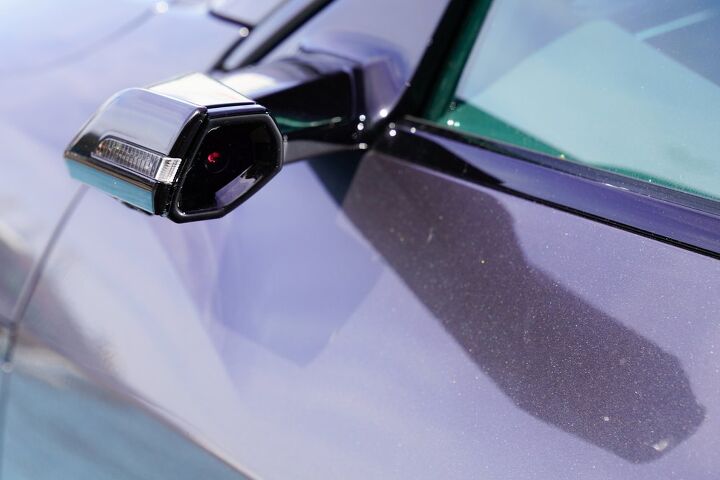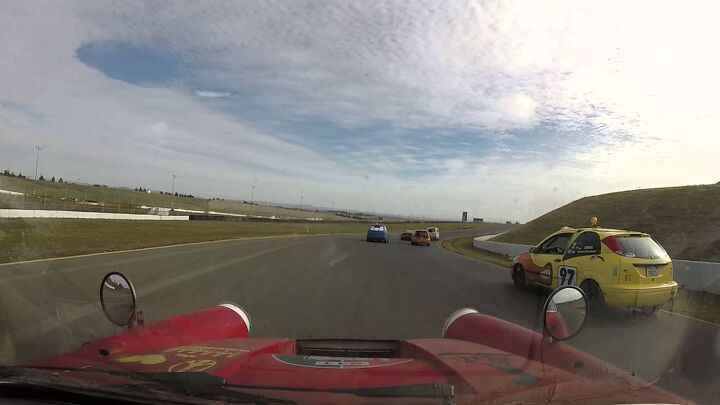#SafetyEquipment
BMW Patents Projection Side Mirror Display, Cool But Pointless
The problem with being in the sales business is the need to constantly outdo your rivals. Automakers know this better than just about anyone, which is why you see gimmicky features installed into vehicles that probably would have been just as good without them. But one never knows what’s going to catch on with consumers and you’ll never catch the big one if you don’t go fishing, so you’ll see patents filed on just about everything.
BMW has reportedly done just that with its new virtual mirror technology system that merges camera-based mirrors with olde-tyme projection technologies. The purpose appears to be something that replicates the experience of traditional side mirrors (which work fine) while adding some modern features that can only be accomplished using the newer stuff.
Honda's Newest Product: Blind-spot Monitoring for Children
While every other developed nation has been struggling unsuccessfully to catch up, Japan remains ground zero for adorable robots and Honda is continuing the trend with its new traffic-safety gizmo. Intended to advise young children on how to proceed through intersections, the product is really more like blind-spot-monitoring for kids than a full-on robotic entity. But it seems a useful useful addition to the pedestrian-heavy country where youngsters are substantially more likely to be struck by automobiles than here in North America.
Titled “Ropot” by its creators, the device rides on a backpack or shoulder strap and uses its GPS capabilities to remind kids to stop and look at intersections. It also allows parents to track the whereabouts of their offspring. However, since Ropot is targeted for children who are just starting to venture places on their own, a little parental spying may be warranted. All the adults have to do is make sure they take that first trip to school together so Honda’s wide-eyed helper can learn the route.
No Fixed Abode: LaneWatch, We Hardly Knew Ye
I don’t know who coined the term — I suspect it was Car and Driver, which was then at an all-time peak of editorial excellence — but this is probably one of those cases where success has many fathers, and the child in this case was the phrase “idiot light.”
Let’s say that you were a new-car buyer in 1977. The vast majority of the cars you saw in a dealership would have just two gauges: speedometer and fuel level. Any other information was conveyed in binary fashion by a set of light-up warnings. The typical Seventies American car would have TEMP (for overheating), OIL (for lack of oil pressure), ALT (alternator/battery), and BRAKE (for low brake fluid), but some models had additional lights for low coolant and other functions.
The self-appointed automotive cognoscenti were very contemptuous of these lights, because they didn’t convey much information and they usually didn’t convey it until things had gotten drastic. Why not have a temperature gauge to let you know that your car was getting hot on the way up the Grapevine? Or an oil-pressure gauge, to give you a general idea of your engine health? Why couldn’t the driver be trusted to know the real information and to act accordingly?
LeMons Crash Proves Why Safety Should Never Be Cheap
In my life, I’ve officiated exactly two LeMons races thanks to the good graces of Murilee Martin. At those races, I’ve watched tech inspectors go over seats, belts and harnesses with more scrutiny than border guards in Israel. To be sure, it’s astounding to me how much safety needs to be welded, worked and crammed into a “junker” from the outside — most people never see that. But even I wondered sometimes why tech was so hard to pass.
There are myriad things that can go wrong on a racetrack. However, there are only a few things that can save lives when those things go wrong. For those lifesaving devices, there’s no substitute or corner-cutting, and there are reasons why good teams spend more on a cage and brakes than they ever spend on an engine.
Case in point: Coming up on a blind crest and running face-first into the rear of a stalled car and everyone is OK after.
Automotive Archaeology: Where Eaton Crash Tested the First Practical Airbags
One of the Best & Brightest recently asked me to write about the history of automotive safety equipment. Today’s consumers ask how many airbags a car offers as standard equipment but in the 1970s the idea had a difficult time getting accepted, by both automakers and consumers.




















Recent Comments